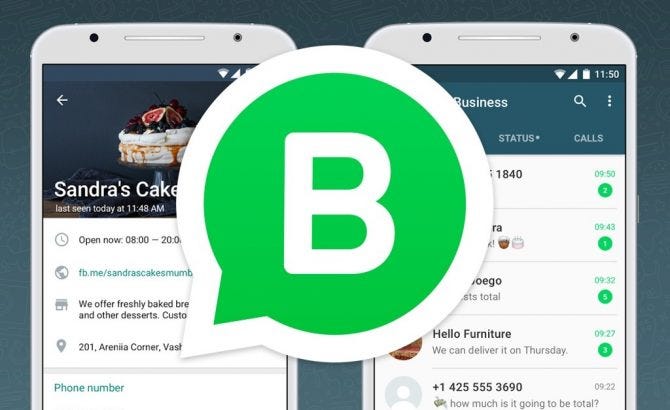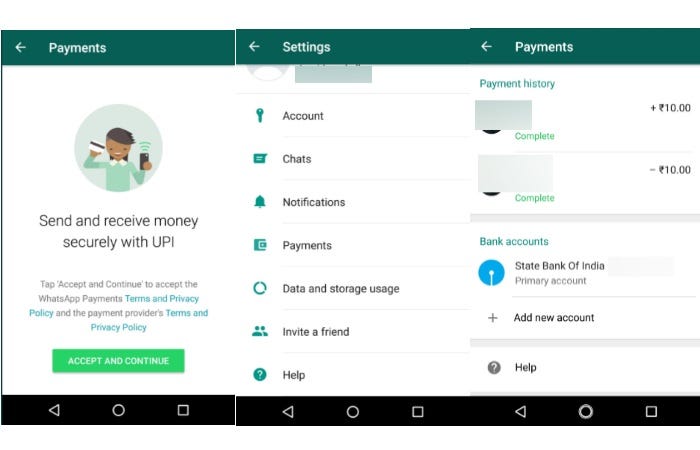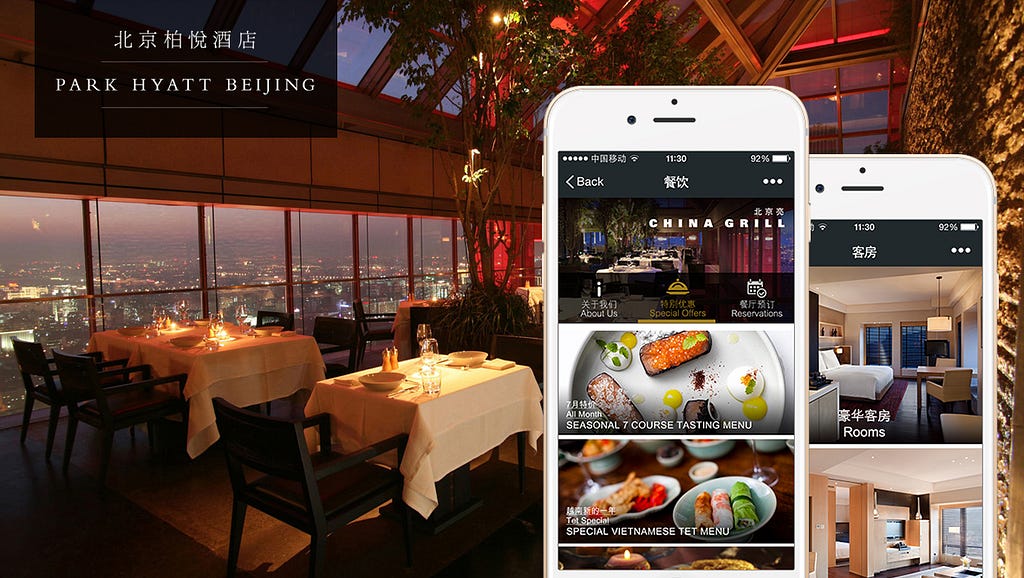Latest news about Bitcoin and all cryptocurrencies. Your daily crypto news habit.
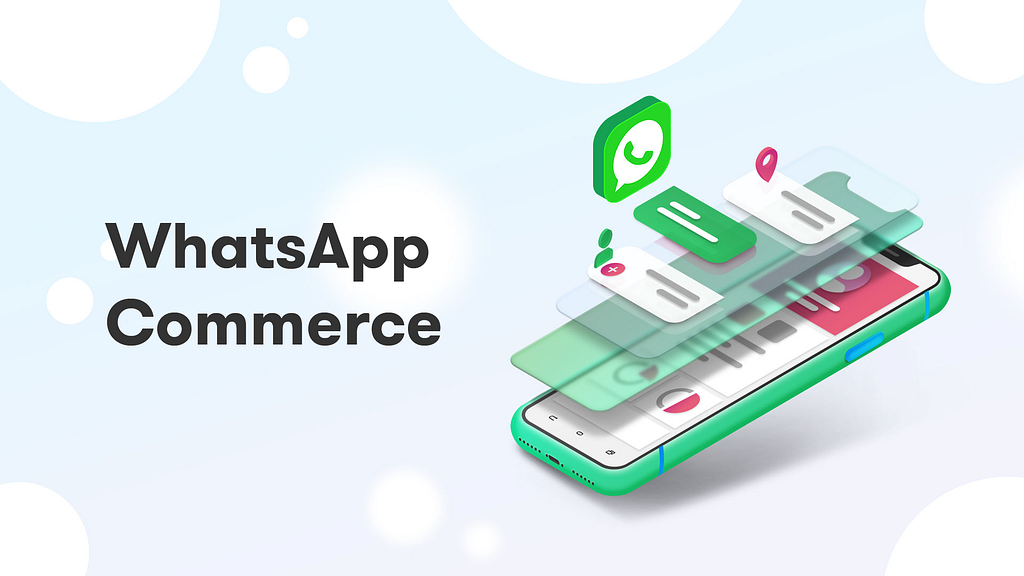
With 1,5 bn active users, Whatsapp is without question one of the most popular messaging apps. It's been a long journey since Whatsapp first launched in 2009. Despite the popularity of Whatsapp among end users, it´s never been easy for companies to use the messaging app as a communication channel. Unlike other competitors, Whatsapp has always been reluctant to offer solutions for business users.
The launch of Whatsapp API
However, all that changed two weeks ago when Whatsapp finally launched the official API for Enterprise customers. This is the first time that Whatsapp opens up the platform, so they are being very cautious to avoid damaging end user experience. Still, we can already see that Whatsapp has enormous potential for businesses to improve their customer engagement.
Let’s see some essential characteristics of the current Whatsapp API:
The first thing we need to know is that the API is still in a restricted early access mode. What this means is that each company need to apply for formal approval of Whatsapp to use the API. To apply for the access, a business needs to share many pieces of information like industry, company size, amount of message expected to have in Whatsapp, etc.
Secondly, as Whatsapp puts a lot emphasis on user privacy and security each business will need a have a dedicated server to host the API. This will make the integration of the API a little more challenging for companies without a lot of technical resources. Fortunately, Whatsapp also allows third-party developers like Landbot to act as solution partners to help business users to adopt the API quickly.
Thirdly, to avoid misuses from companies like spamming on users, each business user needs to formally solicit user opt-in permission to send proactive messages to users. Here are the instructions from Whatsapp:
A user must first consent to receive messages in WhatsApp by opting into them via a third-party channel. This can be any channel your business uses to communicate with people today — your website, app, email, SMS, retail location, etc.The opt-in must be an active opt-in. This means it must be triggered by a user action, such as entering a phone number or checking a box to indicate consent.Clear opt-in messaging so that a user knows what type(s) of messaging the person is signing up for.
The last point, Whatsapp will separate two different kinds of messages:
-Conversation message: Whatsapp offer charge-free messages between a company and a customer within 24 hours. Once past that time limit, the company can either a) wait until the customer writes again or b) send a predefined proactive message which has a cost associated.
-Message template: this is the proactive message content that each company can send to users for non-promotional use cases. This kind of message can be used for purchase/booking confirmation, order tracking, receiving payment information, etc. Each message will cost between 0.005$ to 0.09$ depending on the country where you want to send the message.
The rise of Whatsapp Commerce
After reviewing the characteristics of the Whatsapp API, we can see that it´s still in an early stage and many things will likely to change. I believe that the Whatsapp team will need at least 3–6 months to test the current model and see how is both Business and end-user adoption. After the initial test, they will open up the API access for everybody. Consequently, I think we could see an explosive adoption of Whatsapp API in 2019.
The massive adoption would generate a new ecosystem based on the so-called Whatsapp Commerce:
It’s a new business model where companies from various industries would be interacting with customers by offering product and services using Whatsapp as the primary channel.
The idea of a messaging app acting as a commerce platform is nothing new, Wechat (the Chinese Whatsapp) has already become the synonym of the Internet for many consumers in China. Messenger from Facebook, on the other hand, with the introduction of Chatbot was clearly trying to replicate the success of Wechat in the west. Many other smaller messaging apps like Line, Kik, even Snapchat, are trying to become the Wechat of their respective market.
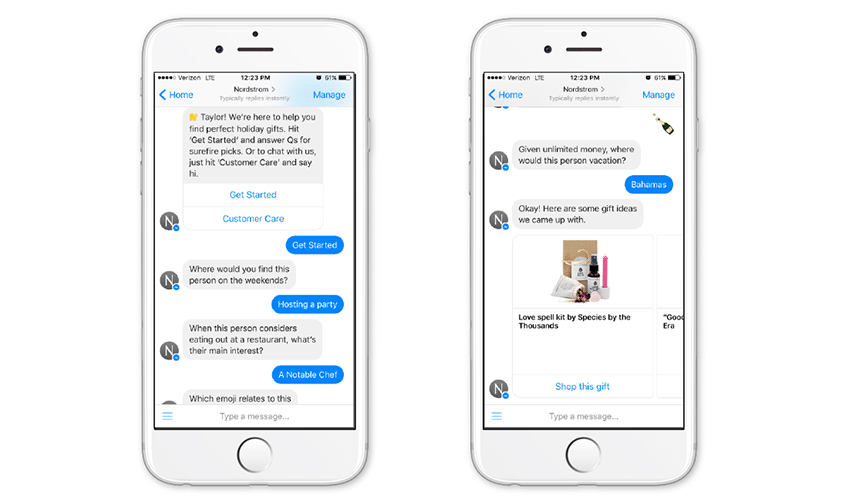 Example of Nordstrom´s Messenger bot
Example of Nordstrom´s Messenger bot
Unlike some of the competition in the West, Whatsapp has a significant advantage which is the huge penetration it has in many countries like Spain, Brazil or India. Whatsapp could leverage the popularity of the platform in those market and build a broad ecosystem as Wechat has in China.
For that several things need to happen:
- Native Payment: one key component of Wechat is the possibility to allow users to make payment for every kind of use cases: p2p, banking, restaurant, e-commerce, etc. According to official data from Tencent, Wechat is generating +$1.2 Trillion. Whatsapp is already testing the native payment feature in India with more than 1M users. The Whatsapp team will soon be introducing this new feature to many other countries. The native payment will allow companies to offer a better purchase experience to their customers inside of Whatsapp.
- O2O: another prominent characteristic of Wechat is the merge of the Online and Offline world. For example, in China when a user goes to a restaurant, she can order the food directly by scanning a QR code. Once finished the meal, she can pay directly using her Wechat account. The O2O model allows traditional retailers have a better chance of competing with pure online players. At the same time, it extends the use cases users could have with the messaging app. Currently, Whatsapp is still very focused on the online world, but with mechanisms like the QR code (which they already use to connect Whatsapp web session), they could help businesses offer better service also in many offline scenarios.
- Mini Program: a year ago Wechat launched a new feature called mini-program, which is quick access to an application that user could use without the need of downloading the app. This reduces the friction significantly for users to try out new apps that have a low frequency of usage like a hotel o e-commerce app. Furthermore, when accessing from Wechat to a mini-program, users are identified with their Wechat account which makes the process frictionless without the hassle of creating a new account, putting payment information, etc. This last part will be tough to accomplish given the limitation we have on privacy-related issues in the West. But we should find out ways to reduce the friction for users to get a product or service.
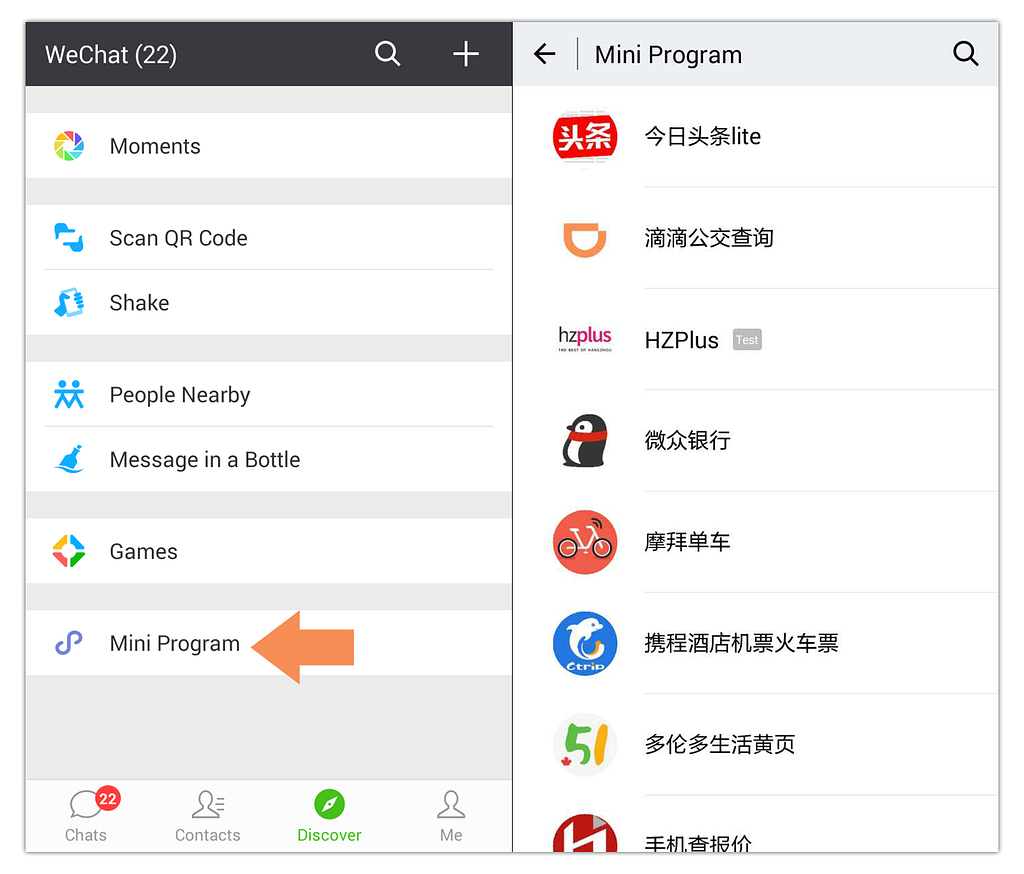 How to access Mini Program inside Wechat
How to access Mini Program inside Wechat
Conclusions
To sum up we can say that the WhatsApp API is still in the initial stages but presents many opportunities for all types of companies that want to take advantage of the potential of reach of 1.5 billion users. We need to take into account the limitations that the API presents to design of our communication strategies accordingly.
On the other hand, we know that WhatsApp itself still faces many challenges to build a robust ecosystem around the messaging platform. I encourage all entrepreneurs working with WhatsApp to share their experiences and help make WhatsApp Commerce a reality in the near future.
Landbot is an official WhatsApp partner, specializing in helping companies create conversational experiences on different instant messaging channels.
The rise of Whatsapp Commerce was originally published in Hacker Noon on Medium, where people are continuing the conversation by highlighting and responding to this story.
Disclaimer
The views and opinions expressed in this article are solely those of the authors and do not reflect the views of Bitcoin Insider. Every investment and trading move involves risk - this is especially true for cryptocurrencies given their volatility. We strongly advise our readers to conduct their own research when making a decision.
